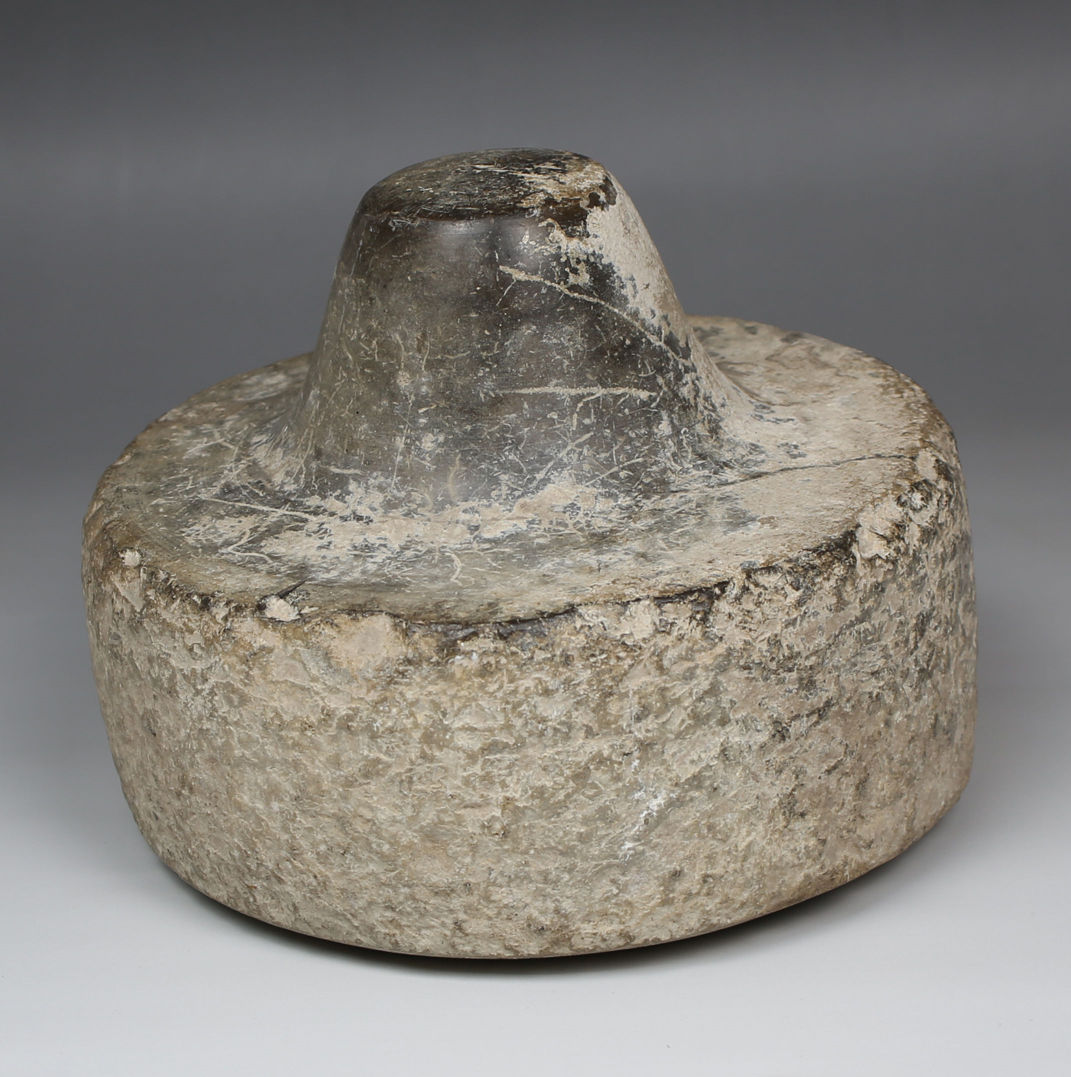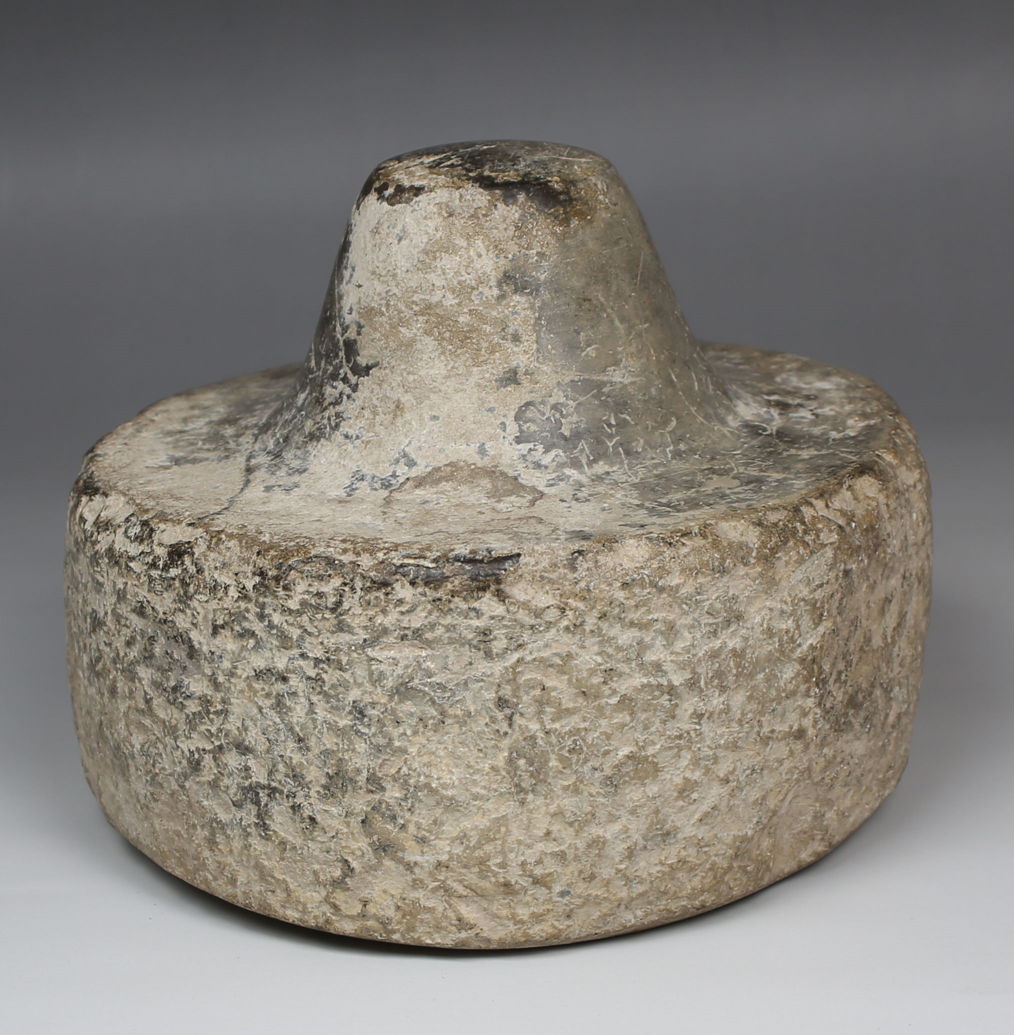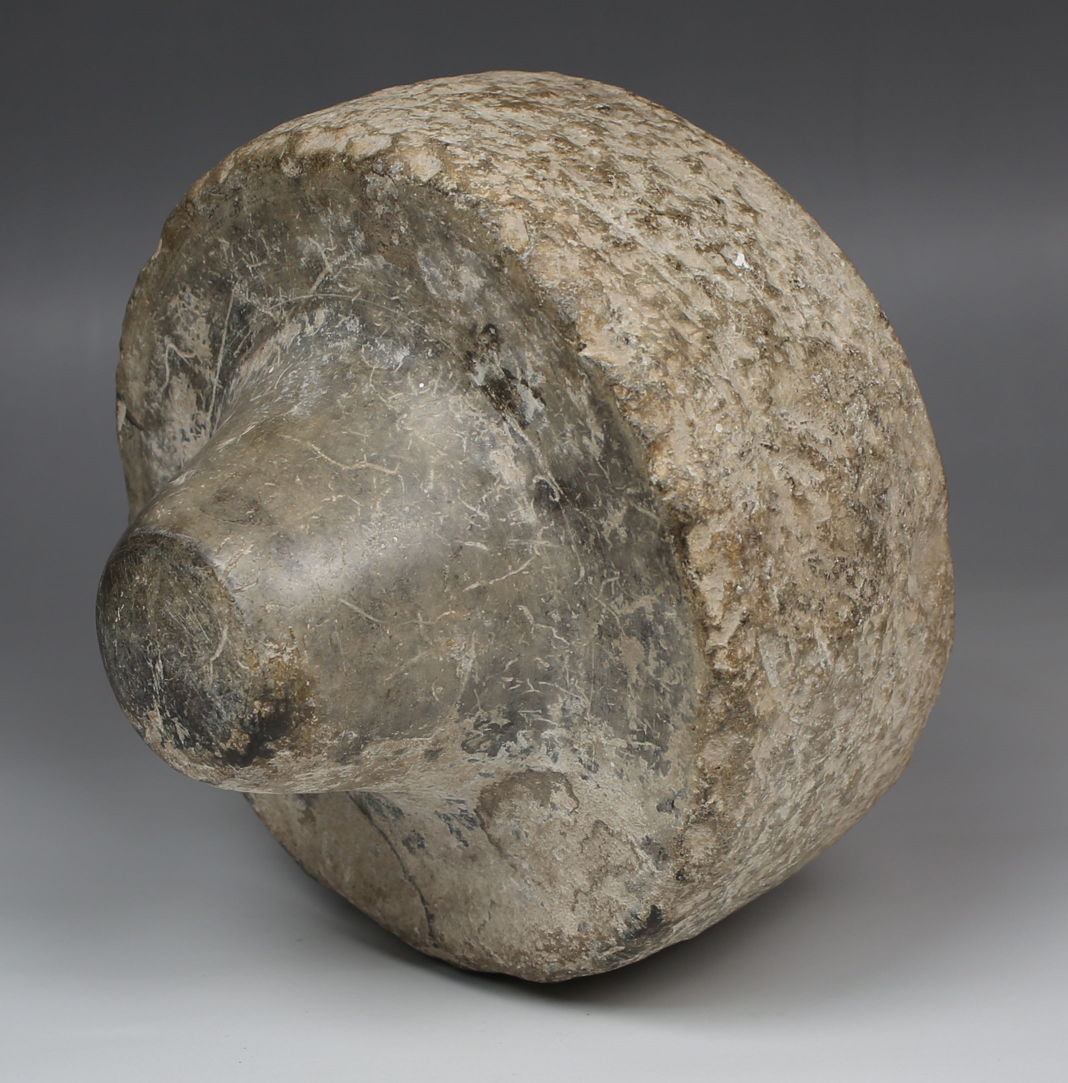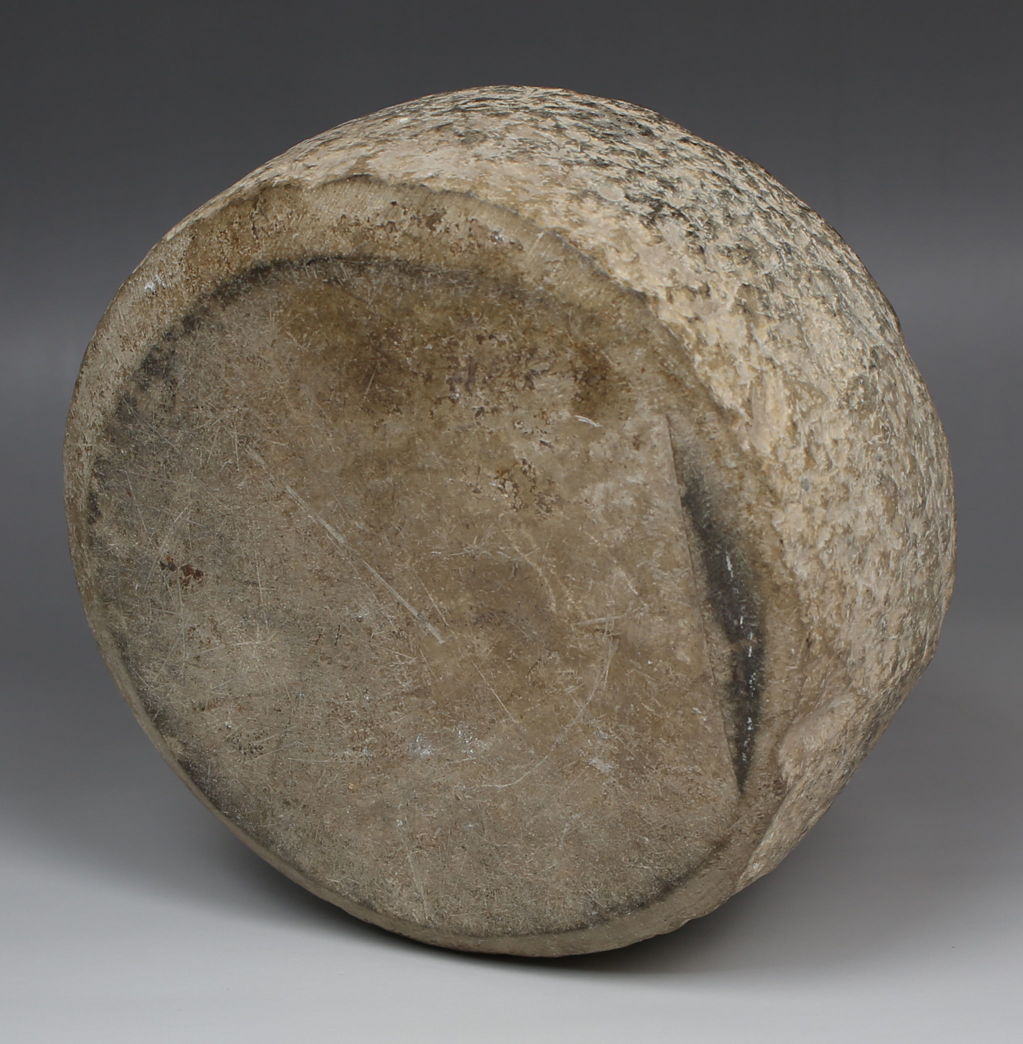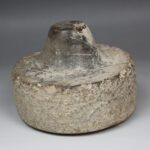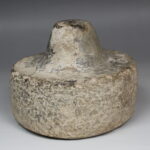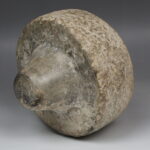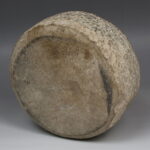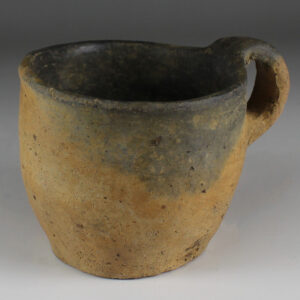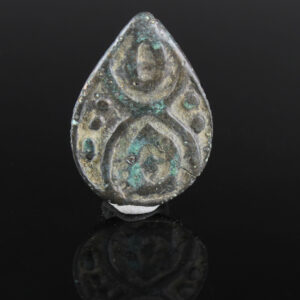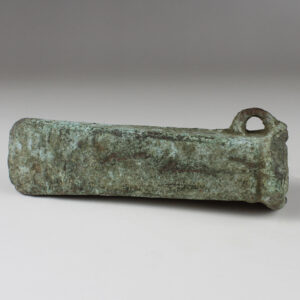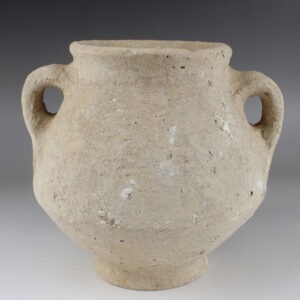Description
| ITEM | Potter’s wheel |
| MATERIAL | Stone |
| CULTURE | Bronze Age / Iron Age |
| PERIOD | 4th – 2nd millenium B.C |
| DIMENSIONS | 115 mm x 145 mm diameter |
| CONDITION | Good condition |
| PROVENANCE | Ex Museum Exhibiton of the Arbeitsgruppe für Biblische Archäologie, Germany (Deaccession) |
In the Bronze Age and Iron Age, the potter’s wheel underwent significant technological advancements, with early versions often crafted from stone. These stone potter’s wheels were simple in design yet played a crucial role in revolutionizing pottery production. Typically consisting of a heavy circular stone disk mounted on a central axis, the stone potter’s wheel allowed potters to shape and mold clay with greater precision and efficiency than traditional hand-building techniques.
The introduction of the stone potter’s wheel represented a significant leap forward in pottery manufacturing during the Bronze Age and Iron Age. By spinning the wheel with their foot or hand, potters could rotate the clay vessel being formed, enabling them to create symmetrical shapes and smooth surfaces with greater ease and consistency. This innovation not only accelerated the pace of pottery production but also facilitated the creation of more complex and refined pottery designs, including vessels with thinner walls and more intricate decorations.
Stone potter’s wheels also had a profound impact on social and economic dynamics in Bronze Age and Iron Age societies. The increased efficiency of pottery production made possible by the potter’s wheel allowed for the mass production of pottery vessels, which were essential for storing food, transporting goods, and performing various domestic and industrial tasks. This, in turn, contributed to the development of specialized craft industries, trade networks, and urban centers, where pottery production played a central role in economic prosperity and cultural exchange.


